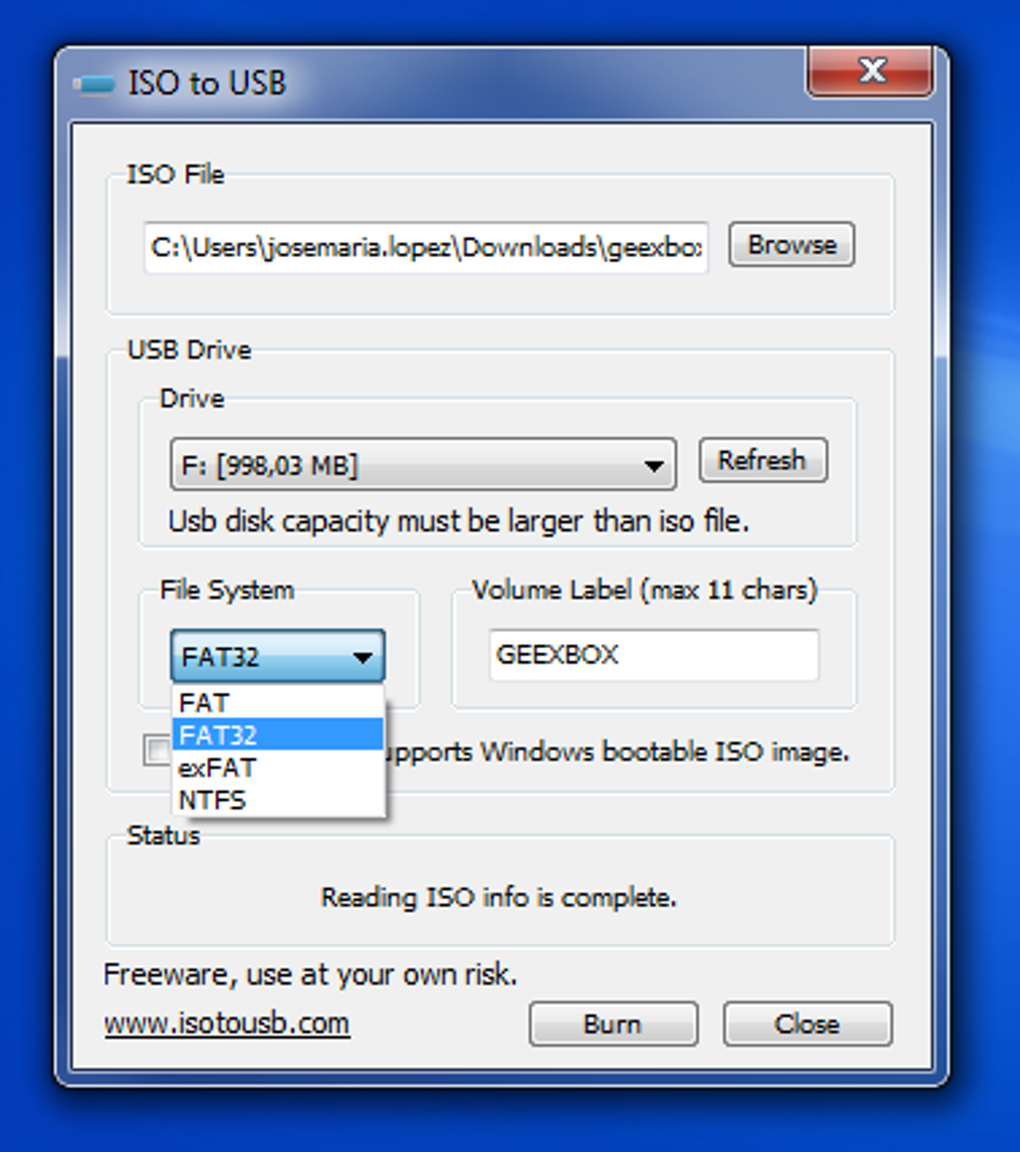Usb Formating Program For Mac With An Iso File
- Paint Program For Mac
- Usb Formatting Program For Mac With An Iso File
- Apa Formatting Program For Mac
- Free Formatting Program For Mac X
Download Windows 10 Disc Image. First, you need to download the Windows 10 ISO file. Go to the download page and select the proper edition of Windows 10 in the dropdown menu. USB Drive Format Tool is a tiny freeware utility designed for formatting any USB storage devices (USB Flash drive, USB stick, USB pen drive, USB portable drive, and SDCard) in FAT, FAT32, exFAT, and NTFS file systems.
I have tried to copy an ISO file to a USB drive. I am unable to do it with Disk Utility. How can I copy the ISO file to a USB drive?
But I get the below. I have enough space in the 16GB USB drive for the 2GB ISO file. What am I doing wrong?
Debugging
Bmike commented 'You can isolate the scanning of the image from the restoring to see if the problem lies with the image or the copy. Images -> Scan Image for Restore... from the menu of Disk Utility.' but the procedure fires the error below. What does it mean?
bneely9 Answers
From http://www.youtube.com/watch?v=fu2g_E2ZK8A:
You can also can try this. It works for me. This is a rather 'raw' copy and will typically not work for a bootable USB, but will work for other cases.
Here is a transcription of the commands from the screen shot for your copy/paste pleasure.
tripleeePaint Program For Mac
Usb Formatting Program For Mac With An Iso File
IMHO the easiest way is in terminal:
- First run
diskutil list - then insert your usb stick
- and run
diskutil listagain to see the disk node (e.g. /dev/disk2). - Now run
diskutil unmountDisk /dev/diskN - and do
sudo dd if=/path-to.iso of=/dev/rdiskN bs=1m(orbs=1Mwith homebrew) - When finished
diskutil eject /dev/diskN
If you want your USB to be 'bootable' when all is said and done (ex: windows install disk), you're going to either want to use the Boot Camp Assistant (only check the 'Create a Windows 7 or later version install disk' checkbox, then follow the prompts, it will create a FAT32 (i.e. bootable) USB version of your ISO file).
Some ISO's are created 'special' to not need this, but not all are (ex: windows install disks). Details: https://superuser.com/q/1063220/39364
I.e. dd is not always enough. Especially for windows install .iso's.
You can use an open source tool named UNetbootin.
Also you can see an step-by-step tutorial with images by Ubuntu in here.
This thread here outlines a graphical way of turning a USB drive into a boot disk. The user jbdjunk mentions the proceduce below, copy-pasted from the earlier site.
- Open Disk Utility
- Plug in USB
- Format USB to Mac Extended (Journaled)
- Create Partition on USB [GUID for Intel chips, APM for PPC]
- Unmount created Partition
- Drag and Drop disk image (dmg or iso) into Disk Utility
- Open disk image (double click or button in DU)
- Select opened disk image on left menu
- Click over to Restore
- Drag and drop selected image into source field
- Drag and drop (unmounted) USB partition into destination
- OK (may have to type in admin passwords and such)
- Wait
- Enjoy!
You can find the Debian-style-/dev/sdb location after $ sudo port install watch and then getting the address from the kernel ring buffer with $ sudo watch --interval=1 'dmesg|tail' so
now you know the address to be something like /Volumes/disk1s1 and for the mount-point like /Volumes/Untitled 1 but Apple requires some syntactic sugar in $ sudo umount /Volumes/UNTITLED 1/ umount(/Volumes/UNTITLED 1): Resource busy -- try 'diskutil unmount' but it won't stop us! So everything as one-liners below, enjoy!
This so far is very close to working with distros such as Ubuntu here. Now we make only a small difference to this procedure to get it working with Apple computers, namely converting the ISO into special format usually labelled with DMG or just IMG.
Apple way
The only difference to Apple is that you need to make the ISO file into special DMG file and upload that. An answer provided a video that solved the issue but this screenshot should contain all essential.

I can confirm that an 'official' Win10 (and also Win 7.1) iso obtained from University contract distributor winds up with a UDF formatted USB stick when copied with dd. Rogerdpack's answer explains why.
Note that some versions of Boot Camp Assistant do not offer a 'Win 7 or later' option; Version 3 (.2) and later do. Also, if you have copied your iso fruitlessly to the USB drive (now in UDF format) Boot Camp Assistant may (will) complain about your 8 GB flash being too small. Reformat this drive before using it in Boot Camp Assistant.
Apa Formatting Program For Mac
If you want to make a bootable USB then I would suggest Unetbootin
Quoting from the ubuntu article linked earlier:
I think the key is to use the drive (/dev/sdb), not the partition (/dev/sdb1), in the of= option:
sudo dd if=dban.iso of=/dev/sdb bs=1m